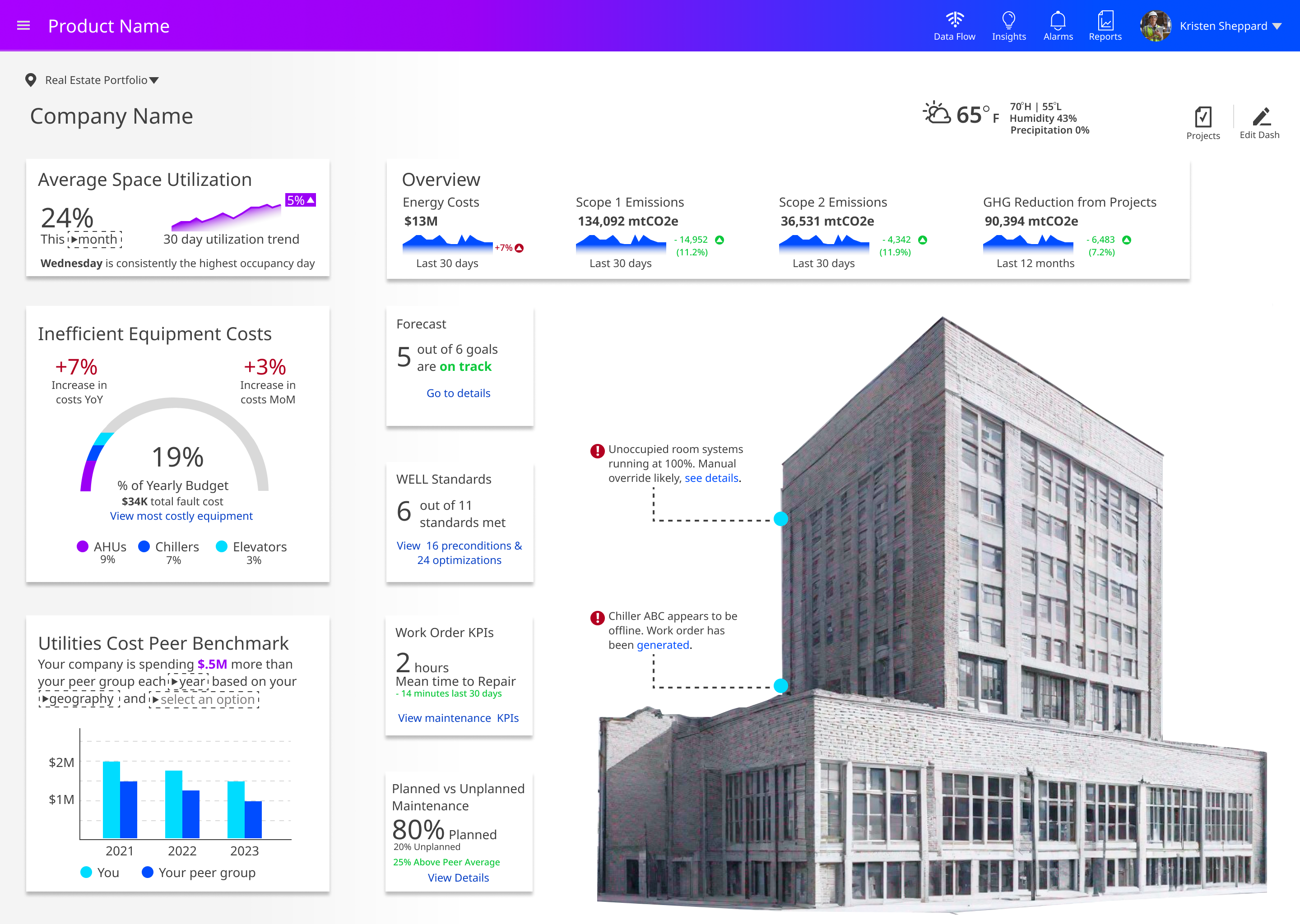Overview of Re-Envisioning a Product
From...

To...



My Role
Acquisition
Interviews
Expected ARR
In order to remain competitive in the marketplace, we needed to deliver a scalable, mobile friendly, smart building experience based on modern architecture principles.

Using participatory design, the team worked with a third party, Lextant, to run a global study on the ideal building management solution.

The product had multiple products coming together into a single pane of glass, and in the midst of the redesign the company acquired another SaaS company in the smart building space.

Breaking down the product vision into iterative chunks to be developed in the MVP, building ahead with the design system, and establishing & adopting new ways of working.
Once there was a clear understanding and model of what our core persona was looking for product and technology developed their own problem statements in response to the research and to build the business case for the redesign and inform their own roadmaps.

The current product solution had a variety of challenges to be addressed to stay competitive and ensure customers achieve the full value from the solution. These challenges were also key customer asks / requirements and included:
There were also several platform and data shortcomings that were impacting the speed of customer value creation and the ability to create meaningful content for customers including: